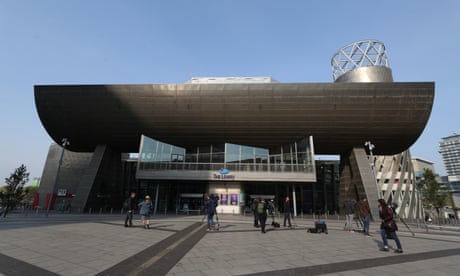October 1st 1999, Julia Fawcett, Chief Executive of the Lowry Museum and Gallery, said that the Gallery was not in a position to buy the painting, which is estimated to fetch up to £8 million.
She said: “Had it been three or four years ago the position might have been different in terms of our ability to fundraise to acquire it and bring it into the public collection, meaning it will be saved forever. “But fragility for arts organisations at the moment, the timing is so challenging. “I think it is absolutely our best prospect, in terms of securing it for public displays, really to find somebody who would acquire it, who would have that sense of responsibility like the PFA had, and ensure that it does remain available for the public and it remains free.” Ms Fawcett added that the painting is “more of a piece of social history than it is a painting of a football match”.
“It is so evocative of Lowry’s work. If you see the painting, there’s probably about a millimetre of the pitch available, the whole of the painting bar that millimetre is depicting the local communities making their way to the match.” Save Lowry’s Going to the Match for public, urges Salford mayor Plea to wealthy footballers and clubs to help buy auctioned painting to stop it disappearing into private collection
 Going to the Match by LS Lowry, owned by the PFA and on show at the Lowry museum for 22 years, is expected to reach up to £8m.
Going to the Match by LS Lowry, owned by the PFA and on show at the Lowry museum for 22 years, is expected to reach up to £8m. The 1953 work by one of Britain’s best known and best-loved painters is expected to smash records when it is sold by the Professional Footballers’ Association next month. Christie’s, the auction house handling the sale, estimates it will fetch up to £8m. The new owner must keep it freely accessible to the public, said Paul Dennett, the mayor of Salford, and Julia Fawcett, chief executive of the Lowry museum and gallery, where the painting is displayed.
Dennett said he was “exceptionally worried” about the painting disappearing into a private collection. “My fear is that a work that has been publicly available at the Lowry for 22 years, that champions the work of one of our great artists, is potentially going to be lost from public view and public access.” It was impossible for Salford city council to buy the work given the intense pressure on local authority resources in a time of mounting economic crisis, he said.
But, he added: “I’d like to make a personal plea for the footballing community here in Greater Manchester to look at retaining this painting for the people of Greater Manchester. There’s a lot of money in that community, so finding £8m-plus wouldn’t be too difficult.” Fawcett said there was precedent for Lowry paintings being bought by private individuals but to “come straight out of the auction house into our gallery. We’d like to have a conversation with the buyer [of Going To The Match] about the responsibility that comes with owning such a work.”
The gallery was not in a position to buy it and there was little time before the 19 October sale to try to raise funds, she said. “This isn’t just any painting. We have school trips, children coming to study the work. It’s clearly linked to the social history of our city. It’s seen not just by traditional art lovers; the painting draws in the ordinary people it represents. We have coachloads of football fans coming in ahead of a match.” Lowry, famous for his stick-like figures and industrial scenes in the north-west of England in the mid-20th century, produced a number of football paintings, of which Going to the Match is the best known.
As well as the crowds flocking to the turnstiles, the painting shows crowded terraces inside the stadium, surrounding terraced homes and factories in the background. Dennett said: “Lowry captured working-class life and celebrated the football community. This isn’t about superstar salaries, this is about the institutional role of football in our communities. For this to be lost from Lowry’s artistic ecosystem, which is held by the city of Salford, would be a huge tragedy and scandal.”
In 1999, the PFA paid £1.9m, more than four times the estimate, for Going to the Match. Gordon Taylor, then chief executive, said it was “quite simply the finest football painting ever”. It is being sold to raise funds for the Players Foundation, the PFA’s charitable arm, which became a separate body earlier this year under a reorganisation prompted by a warning from the Charity Commission. It helps players and former players with matters including education, pensions, health and legal issues. The PFA had been “responsible owners” for 22 years, said Fawcett. She had been aware of plans to sell the painting for several months.


No comments:
Post a Comment